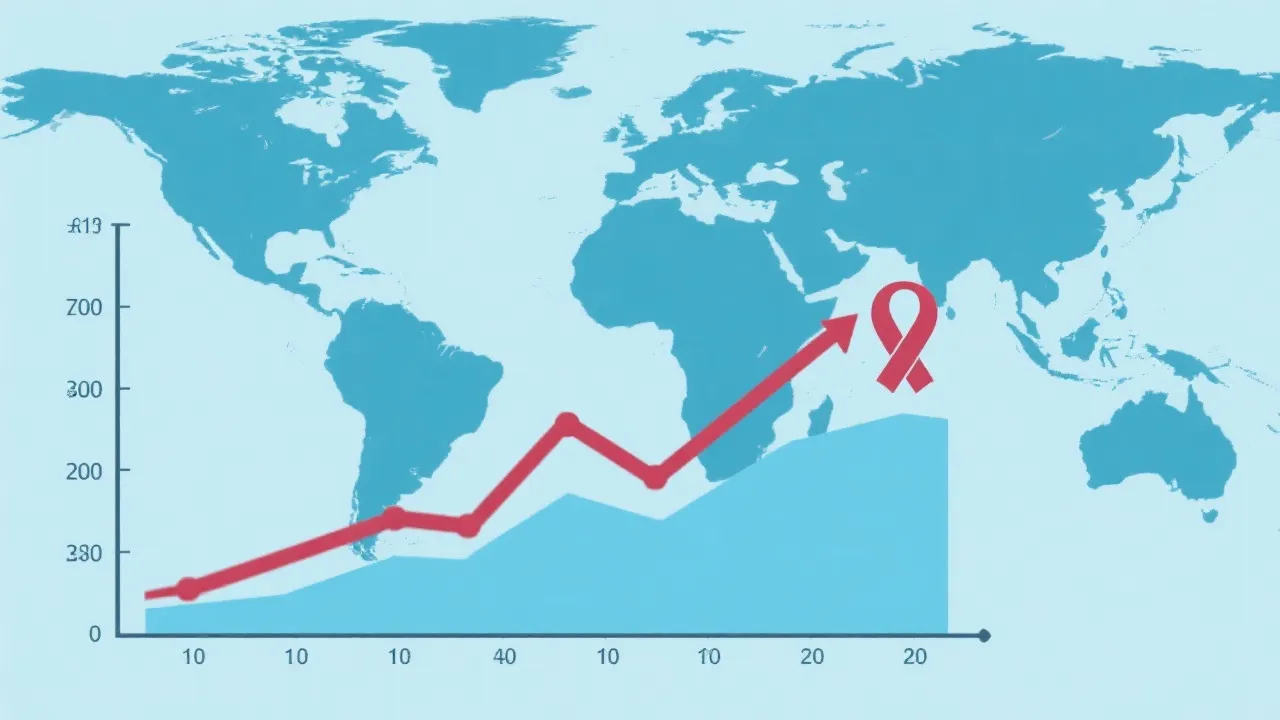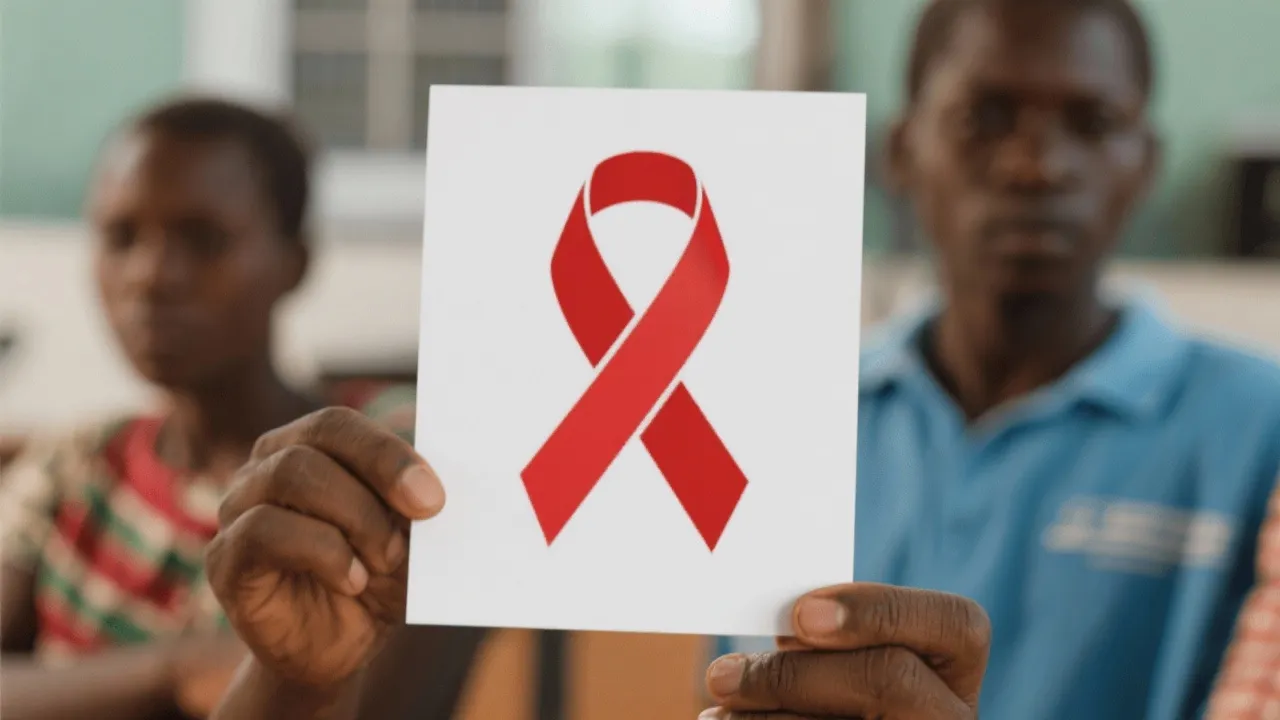Understanding HIV's Declining Rates
This article delves into the notable decline in HIV cases globally, investigating the contributing factors and implications of this trend. HIV, or Human Immunodeficiency Virus, has significantly impacted public health for decades. However, advancements in treatment, prevention strategies, and increased awareness have contributed to a decrease in its prevalence, offering hope for a future with reduced HIV transmission.

Overview of HIV Decline
HIV (Human Immunodeficiency Virus) has been a significant public health challenge worldwide for decades. Its impact has been profound, affecting millions of lives, healthcare systems, and economies around the globe. However, the steady decline in HIV rates in recent years marks a hopeful trend that suggests better days are ahead. This positive shift is primarily attributed to substantial advances in medical research, innovative public health strategies aimed at prevention, effective treatment options, and broader access to healthcare services. The multifaceted impact of these changes extends beyond mere statistics, reverberating through healthcare systems, communities, and individuals and reshaping societal attitudes towards HIV/AIDS.
The global burden of HIV has led to substantial research efforts aimed at understanding the virus, its mode of transmission, and effective prevention and treatment methods. Extensive studies and clinical trials have paved the way for transformative therapies that have changed the landscape of HIV treatment and prevention. As a result, today more people than ever are living with HIV and thriving, thanks to the availability of life-saving medications and holistic care approaches that encompass physical, psychological, and social aspects of health.
Factors Contributing to the Decline
A myriad of factors contribute to the declining rates of HIV. Foremost among these is the increased availability of antiretroviral therapy (ART). Since ART became widely accessible, it has been fundamental in managing HIV infection, reducing viral load, and improving the quality of life for those living with the virus. When effectively administered, ART suppresses the virus to undetectable levels, significantly reducing the risk of transmission to sexual partners.
Moreover, the implementation of routine viral load monitoring has proven essential in ensuring consistent treatment adherence and timely interventions for individuals whose viral loads may be rising. This proactive approach not only enhances individual health outcomes but also protects communities by minimizing the potential for further transmissions.
Pre-exposure prophylaxis (PrEP) has also played a crucial role in the decline of new HIV infections. This preventive treatment, approved for at-risk populations, has shown itself to be highly effective in preventing the contraction of HIV when taken consistently. PrEP has become a game-changer, particularly for communities with high rates of transmission, such as men who have sex with men and intravenous drug users. With the backing of public health campaigns and a growing acceptance of preventive strategies, PrEP usage continues to rise, further contributing to the decline.
Alongside medical interventions, global awareness campaigns have educated the public about safe practices and reduced stigmatization, encouraging more people to seek testing and treatment proactively. Educational initiatives aimed at both the general public and specific high-risk populations have been instrumental in improving knowledge about HIV transmission routes, signs, and symptoms, and the importance of regular testing.
Furthermore, community outreach programs that engage individuals in high-prevalence areas have fostered open discussions about sexual health and HIV prevention. By normalizing conversations around HIV, these programs help dismantle the stigma that often surrounds the virus and create environments where individuals feel empowered to seek help without fear of discrimination.
Prevention Strategies
| Strategy | Description |
|---|---|
| Pre-exposure Prophylaxis (PrEP) | A medication taken by HIV-negative individuals at high risk of infection to prevent contracting the virus. Studies have shown that when taken consistently, PrEP can reduce the risk of getting HIV from sex by about 99%. |
| Antiretroviral Therapy (ART) | Treatment for those diagnosed with HIV to lower viral load and prevent transmission. ART has been crucial in transforming HIV from a deadly disease into a manageable chronic condition. |
| Global Awareness Campaigns | Efforts targeting increased knowledge about HIV, promoting testing, reducing stigma, and advocating safe practices. Campaigns like "Undetectable = Untransmittable" have been pivotal in shifting perceptions surrounding HIV and encouraging individuals to get tested. |
| Needle Exchange Programs | Initiatives providing clean needles to reduce the spread of HIV among drug users. These programs not only minimize the risk of HIV transmission but also connect individuals with resources for addiction treatment. |
| HIV Testing Initiatives | Community and home-based testing efforts that encourage individuals to know their HIV status. Regular testing can lead to early diagnosis and treatment, which is essential for reducing transmission rates. |
| Condom Distribution Programs | Supply of free or low-cost condoms to promote safer sex practices, particularly among populations at higher risk for HIV. |
| Harm Reduction Strategies | Programs designed to minimize the negative consequences associated with drug use while providing access to healthcare and addiction treatment options. |
Impact on Public Health Policy
The significant reduction in HIV cases has prompted major shifts in public health policy. Governments and health organizations worldwide are increasingly prioritizing prevention and treatment programs to sustain this positive trend. By allocating resources to education, testing, and treatment accessibility, many countries aim to further decrease the incidence of new infections. This shift also involves recalibrating healthcare budgets to maximize the impact of preventive measures and ensure sustainability for future public health initiatives.
International collaborations have surged, with countries sharing research, strategies, and technologies to combat HIV effectively. Collaborative efforts such as the Global Fund to Fight AIDS, Tuberculosis and Malaria and UNAIDS have facilitated funding and resource allocation to help countries improve their healthcare infrastructure and HIV response strategies. These partnerships have been crucial in managing the epidemic, opening doors to innovations and effective interventions that can be adapted to local needs.
Moreover, the growing recognition of social determinants of health has led to integrated approaches that address not only the medical aspects of HIV but also the socioeconomic factors that contribute to the epidemic. Policymakers are increasingly acknowledging that effective HIV responses must consider education, poverty alleviation, and access to healthcare—recognizing the interconnectedness of these issues and their impact on health outcomes.
As a result, many countries have also started incorporating HIV prevention strategies within broader health and social policies, ensuring a holistic approach to addressing not just HIV but population health in general. This interconnected policy framework is crucial for sustaining gains achieved in reducing new infections and improving the lives of those affected by HIV/AIDS.
Challenges Ahead
Despite the positive trends, challenges remain. One significant hurdle is the ongoing stigma associated with HIV, which, despite significant public awareness efforts, continues to hinder testing, treatment, and care-seeking behaviors among those most at risk. Many individuals remain reluctant to get tested or disclose their HIV status due to fear of discrimination, leading to late diagnoses and increased likelihood of transmission.
Furthermore, healthcare disparities persist, particularly in marginalized communities and low-income countries. Access to healthcare services can be uneven, and individuals from these communities often face barriers such as lack of health insurance, limited access to quality medical care, and fewer educational resources about HIV. These disparities can contribute to continued transmission, especially where preventive measures like ART and PrEP are not readily available.
The recent global health crises, including the COVID-19 pandemic, have also disrupted HIV services in many regions, causing significant delays in testing, treatment initiation, and continuity of care for individuals living with HIV. As healthcare systems grapple with multiple public health priorities, there is an urgent need to ensure that HIV services remain operational and adequately funded. This situation calls for innovative solutions that can streamline care delivery and integrate HIV services into broader health systems to maintain momentum in the fight against the virus.
FAQs
- What is leading to the decline of HIV?
- How does PrEP help in reducing HIV rates?
- Can HIV levels be reduced further?
- What role does stigma play in HIV prevention?
- How can I support HIV prevention efforts?
The decline is largely due to widespread ART availability, PrEP use, improved education and awareness campaigns, as well as enhanced testing and community engagement efforts.
PrEP effectively prevents HIV infection in individuals at high risk, drastically reducing new HIV diagnoses when taken consistently and as prescribed.
Yes, with continued global efforts focusing on expanding access to both prevention and treatment, advancements in biomedical research, and effective policy implementation, further reductions in HIV transmission rates are realistic goals.
Stigma can create significant barriers that deter individuals from seeking testing, treatment, or disclosing their status, thus perpetuating the cycle of transmission. Addressing stigma is crucial for effective prevention strategies.
Individual contributions, whether through volunteering, donations to organizations working in HIV prevention, or advocating for policies that support marginalized communities, can significantly impact ongoing efforts to combat HIV.
Future Directions
As the global effort to combat HIV continues, new challenges and opportunities arise. The ongoing development of an HIV vaccine remains a critical frontier in the fight against the virus. Although substantial progress has been achieved, the goal of developing a viable vaccine could revolutionize prevention strategies. Current vaccine trials are exploring novel approaches aimed at eliciting robust immune responses that can provide lasting protection against HIV infection.
Research into broadly neutralizing antibodies (bnAbs) is also gaining traction, with the potential to change the landscape of HIV prevention. These antibodies are capable of targeting various strains of HIV, offering hope for more comprehensive and effective vaccine strategies.
Additionally, addressing healthcare disparities and ensuring equitable access to HIV treatments remains pivotal. Disparities experienced by communities of color, low-income populations, and LGBTQ+ individuals, amongst others, highlight urgent needs for health equity. Continued investment in research, community engagement, and policy support are essential as the world moves closer to an HIV-free future. Innovative approaches, such as the use of technology to deliver healthcare services and enhance patient engagement, can help bridge the gaps in care access.
The role of community-based organizations will also evolve as we move forward. These organizations are often on the front line, addressing gaps in services and providing culturally competent care tailored to the specific needs of communities. Strengthening these entities and fostering their collaboration with governmental and health organizations will be crucial to ensuring sustained progress in HIV prevention and treatment.
All in all, the future of HIV reduction relies on the interplay of scientific advances, comprehensive policy strategies, and community engagement. By prioritizing these elements collectively, the world can move closer to not only curbing HIV transmission but also improving the quality of life for all people living with HIV. Such efforts will ensure that we do not merely manage HIV but aspire to eliminate it entirely.





